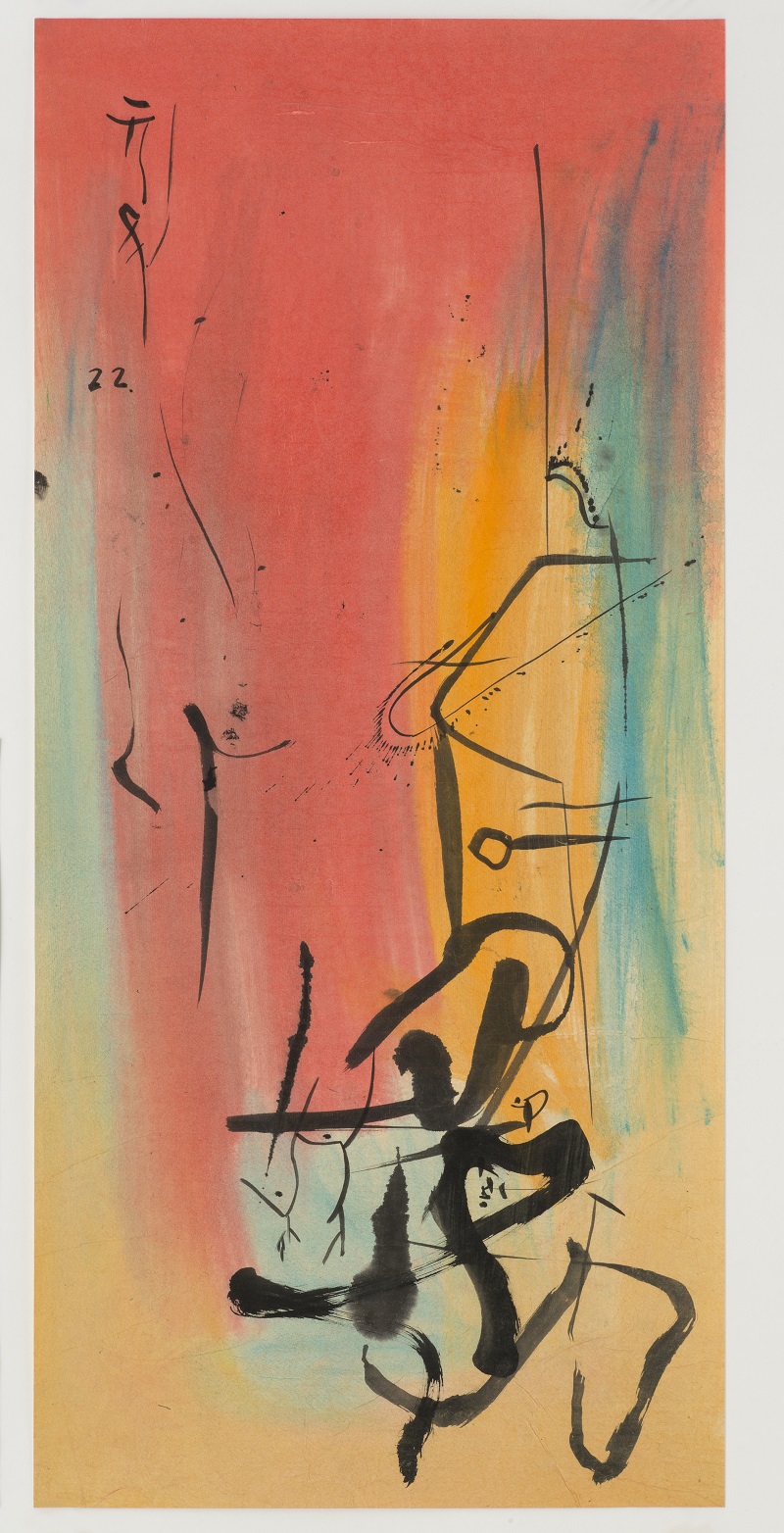Li Yuan-chia’s abstract art drew upon western modernism as well as Zen Buddhist and Daoist thinking. Encompassing painting, calligraphy, sculpture, environmental art, participatory installations and photography, Li’s work explored his preoccupations with space, life and time.
In the 1950s Li belonged to a pioneering group of Taiwanese abstract artists called Ton Fan. In 1963 he moved to Bologna, Italy, where he produced his first folding painted books and began to develop the idea of the ‘cosmic point’ that would become a central feature of his work. For Li, the cosmic point represented the beginning and end of all things. It began as a small calligraphic mark and evolved into a small circle that was sometimes collaged to the surface of the work. He also limited his palette to four colours: black for origin and end, red for blood and life, gold for nobility and white for purity.
In 1965 Li was invited to show his work at the experimental gallery Signals in London, where he moved the following year. In 1968, he relocated to Yorkshire, and eventually settled at Banks in Cumbria, alongside Hadrian’s Wall. It was here in 1972 that he opened the LYC Museum and Art Gallery. During the ten years the museum was open, the LYC provided an exhibition space for over 300 artists including Andy Goldsworthy, Shelagh Wakely, David Nash and Bill Woodrow.
[excerpted from Tate Modern website]
